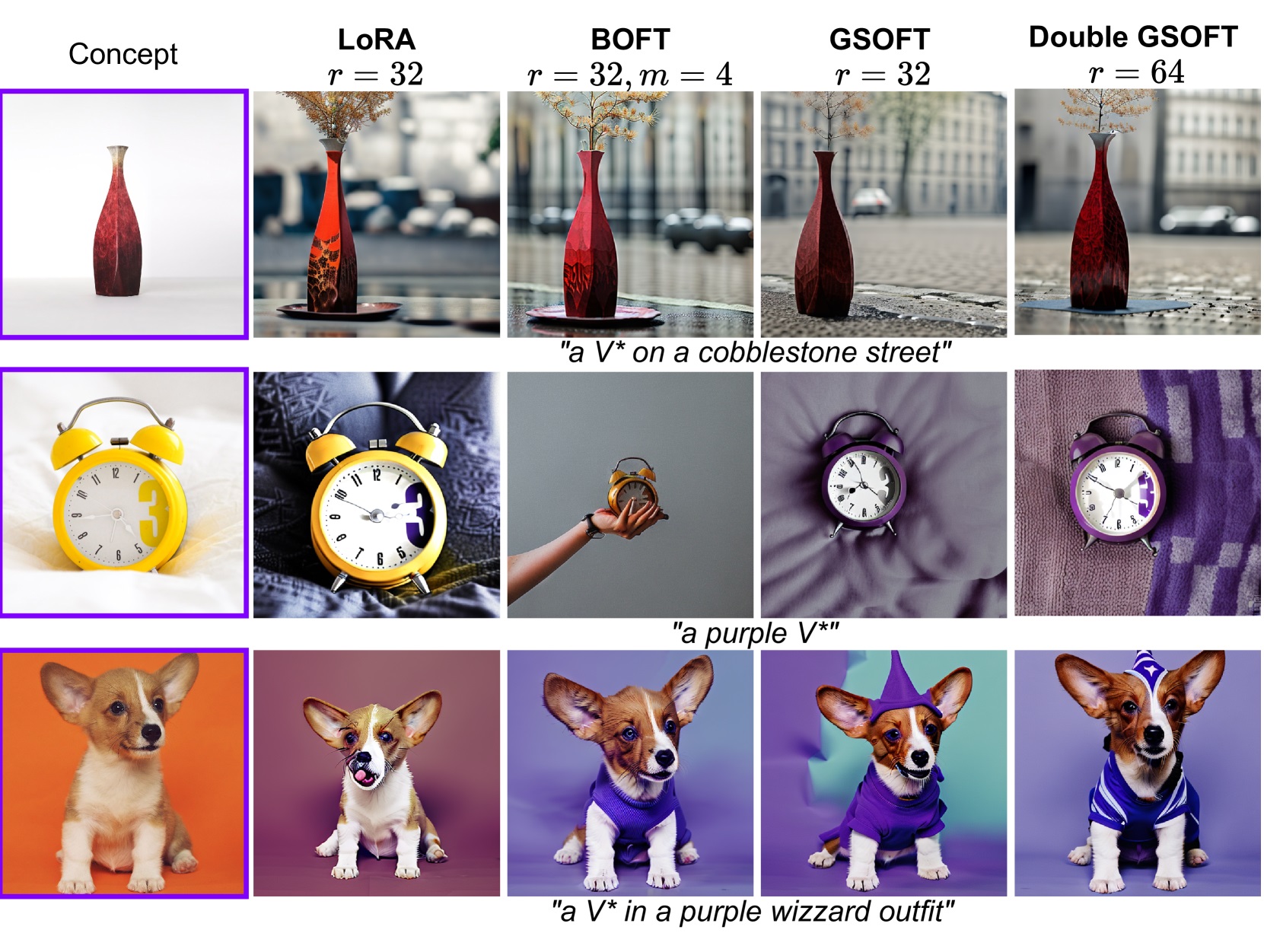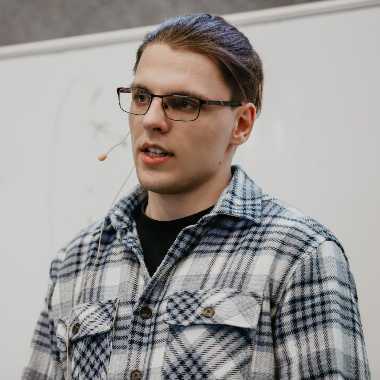Group and Shuffle: Researchers at HSE University and AIRI Accelerate Neural Network Fine-Tuning

Researchers at HSE University and the AIRI Institute have proposed a method for quickly fine-tuning neural networks. Their approach involves processing data in groups and then optimally shuffling these groups to improve their interactions. The method outperforms alternatives in image generation and analysis, as well as in fine-tuning text models, all while requiring less memory and training time. The results have been presented at the NeurIPS 2024 Conference.
The larger the neural network, the more challenging it becomes to quickly adapt it to a new task. Retraining a model from scratch is a time-consuming and costly process. Therefore, developers seek cost-effective ways to adapt a model to a specific task while preserving the overall quality of the original.
One such approach is fine-tuning using orthogonal matrices, which, unlike other methods, preserve the essential features of the original model. Popular alternatives, such as block-diagonal or butterfly matrices, have drawbacks: they are either limited in scope or require extensive computations.
Researchers at the HSE Faculty of Computer Science and the AIRI Institute have proposed a new method of constructing matrices, which they call Group-and-Shuffle. Instead of working with all the data at once, they divide the parameters into small groups, process each group separately, and then shuffle them together. This structure is both flexible and efficient: it enables the model to adapt more precisely to the task while requiring fewer computations and less memory.
Building on GS matrices, the researchers developed GSOFT, a new method for orthogonal fine-tuning of neural networks. Unlike previous approaches, GSOFT uses fewer parameters while maintaining training stability and quality, even with limited data. The team also introduced a two-sided version of the method—Double GSOFT—which allows simultaneous adjustment of parameters from both sides, enhancing the model’s flexibility and accuracy.
'We discovered how to construct orthogonal matrices using only two special types of matrices, instead of five or six as required by previous methods. This saves computational resources and training time,' explains Nikolay Yudin, Research Assistant at the HSE Laboratory for Matrix and Tensor Methods in Machine Learning.
The researchers tested the approach on three types of tasks. When fine-tuning the RoBERTa language model, the method outperformed others while using a comparable number of parameters. In image generation, where the model needed to preserve the original features while adapting to the user’s request, GSOFT and Double GSOFT outperformed popular methods like LoRA and BOFT, all while using less memory and training time.

The authors also tested their approach on convolutional neural networks, which are commonly used for image and video analysis, such as in face recognition. The team adapted the GS matrices even for cases where the model required strong resistance to interference and distortion.
'We tested the method across various scenarios—from language and generative models to robust convolutional networks. In every case, it performed reliably while using fewer resources. This confirms that the method can be applied effectively to a variety of purposes,' comments Aibek Alanov, Senior Research Fellow at the Centre of Deep Learning and Bayesian Methods, AI and Digital Science Institute, HSE FCS, and leader of the Controllable Generative AI team at FusionBrain, AIRI.
See also:
Scientists Have Modelled Supercapacitor Operation at Molecular and Ionic Level
HSE scientists used supercomputer simulations to study the behaviour of ions and water molecules inside the nanopores of a supercapacitor. The results showed that even a very small amount of water alters the charge distribution inside the nanopores and influences the device’s energy storage capacity. This approach makes it possible to predict how supercapacitors behave under different electrolyte compositions and humidity conditions. The paper has been published in Electrochimica Acta. The study was supported by a grant from the Russian Science Foundation (RSF).
Designing an Accurate Reading Skills Test: Why Parallel Texts are Important in Dyslexia Diagnosis
Researchers from the HSE Centre for Language and Brain have developed a tool for accurately assessing reading skills in adults with reading impairments. It can be used, for instance, before and after sessions with a language therapist. The tool includes two texts that differ in content but are equal in complexity: participants were observed to read them at the same speed, make a similar number of errors, and understand the content to the same degree. Such parallel texts will enable more accurate diagnosis of dyslexia and better monitoring of the effectiveness of interventions aimed at addressing it. The paper has been published in Educational Studies.
Internal Clock: How Heart Rate and Emotions Shape Our Perception of Time
Our perception of time depends on heart rate—this is the conclusion reached by neuroscientists at HSE University. In their experiment, volunteers watched short videos designed to evoke specific emotions and estimated each video's duration, while researchers recorded their heart activity using ECG. The study found that the slower a participant's heart rate, the shorter they perceived the video to be—especially when watching unpleasant content. The study has been published in Frontiers in Psychology.
Scientists Identify Personality Traits That Help Schoolchildren Succeed Academically
Economists from HSE University and the Southern Federal University have found that personality traits such as conscientiousness and open-mindedness help schoolchildren improve their academic performance. The study, conducted across seven countries, was the first large-scale international analysis of the impact of character traits on the academic achievement of 10 and 15-year-olds. The findings have been published in the International Journal of Educational Research.
HSE Scientists Reveal How Disrupted Brain Connectivity Affects Cognitive and Social Behaviour in Children with Autism
An international team of scientists, including researchers from the HSE Centre for Language and Brain, has for the first time studied the connectivity between the brain's sensorimotor and cognitive control networks in children with autism. Using fMRI data, the researchers found that connections within the cognitive control network (responsible for attention and inhibitory control) are weakened, while connections between this network and the sensorimotor network (responsible for movement and sensory processing) are, by contrast, excessively strong. These features manifest as difficulties in social interaction and behavioural regulation in children. The study has been published in Brain Imaging and Behavior.
Similar Comprehension, Different Reading: How Native Language Affects Reading in English as a Second Language
Researchers from the MECO international project, including experts from the HSE Centre for Language and Brain, have developed a tool for analysing data on English text reading by native speakers of more than 19 languages. In a large-scale experiment involving over 1,200 people, researchers recorded participants’ eye movements as they silently read the same English texts and then assessed their level of comprehension. The results showed that even when comprehension levels were the same, the reading process—such as gaze fixations, rereading, and word skipping—varied depending on the reader's native language and their English proficiency. The study has been published in Studies in Second Language Acquisition.
Mortgage and Demography: HSE Scientists Reveal How Mortgage Debt Shapes Family Priorities
Having a mortgage increases the likelihood that a Russian family will plan to have a child within the next three years by 39 percentage points. This is the conclusion of a study by Prof. Elena Vakulenko and doctoral student Rufina Evgrafova from the HSE Faculty of Economic Sciences. The authors emphasise that this effect is most pronounced among women, people under 36, and those without children. The study findings have been published in Voprosy Ekonomiki.
Scientists Discover How Correlated Disorder Boosts Superconductivity
Superconductivity is a unique state of matter in which electric current flows without any energy loss. In materials with defects, it typically emerges at very low temperatures and develops in several stages. An international team of scientists, including physicists from HSE MIEM, has demonstrated that when defects within a material are arranged in a specific pattern rather than randomly, superconductivity can occur at a higher temperature and extend throughout the entire material. This discovery could help develop superconductors that operate without the need for extreme cooling. The study has been published in Physical Review B.
Scientists Develop New Method to Detect Motor Disorders Using 3D Objects
Researchers at HSE University have developed a new methodological approach to studying motor planning and execution. By using 3D-printed objects and an infrared tracking system, they demonstrated that the brain initiates the planning process even before movement begins. This approach may eventually aid in the assessment and treatment of patients with neurodegenerative diseases such as Parkinson’s. The paper has been published in Frontiers in Human Neuroscience.
Civic Identity Helps Russians Maintain Mental Health During Sanctions
Researchers at HSE University have found that identifying with one’s country can support psychological coping during difficult times, particularly when individuals reframe the situation or draw on spiritual and cultural values. Reframing in particular can help alleviate symptoms of depression. The study has been published in Journal of Community Psychology.




